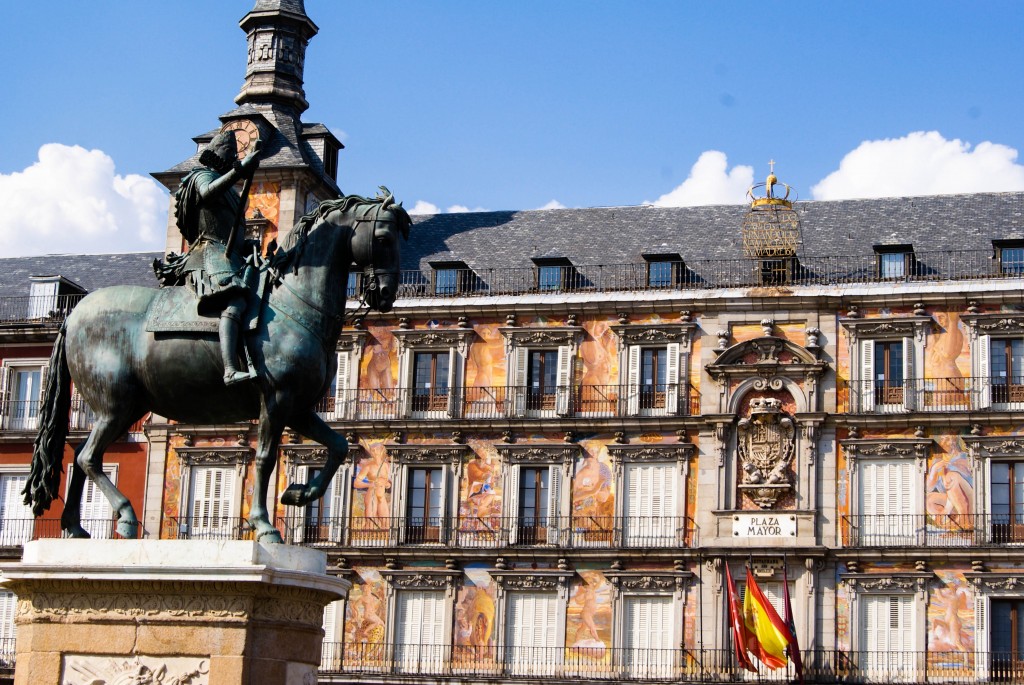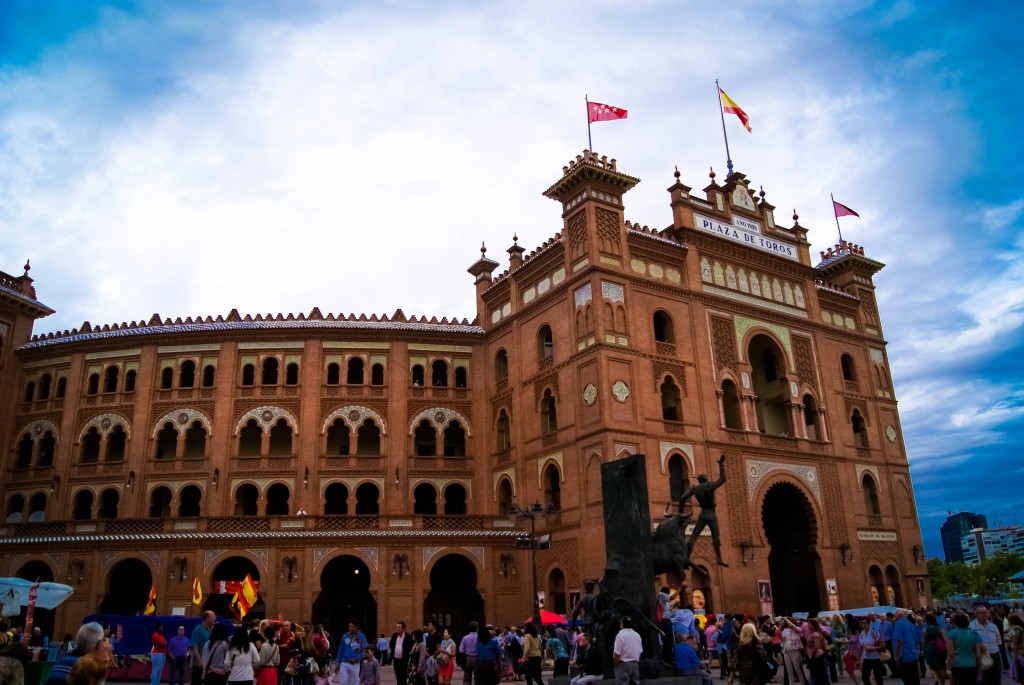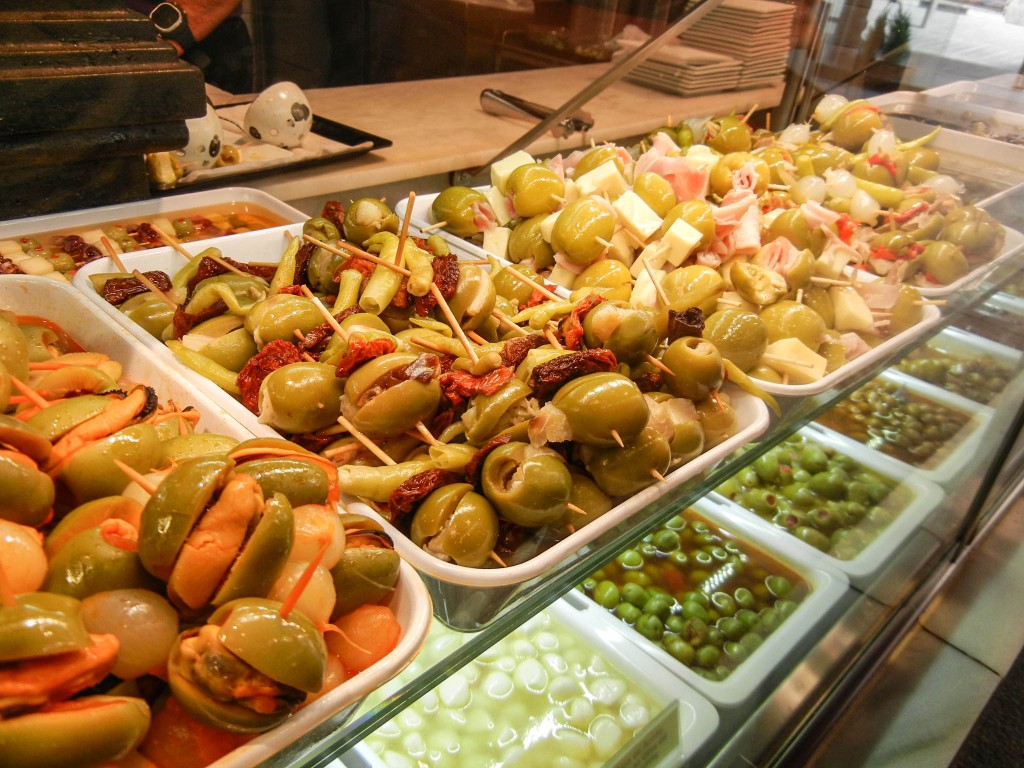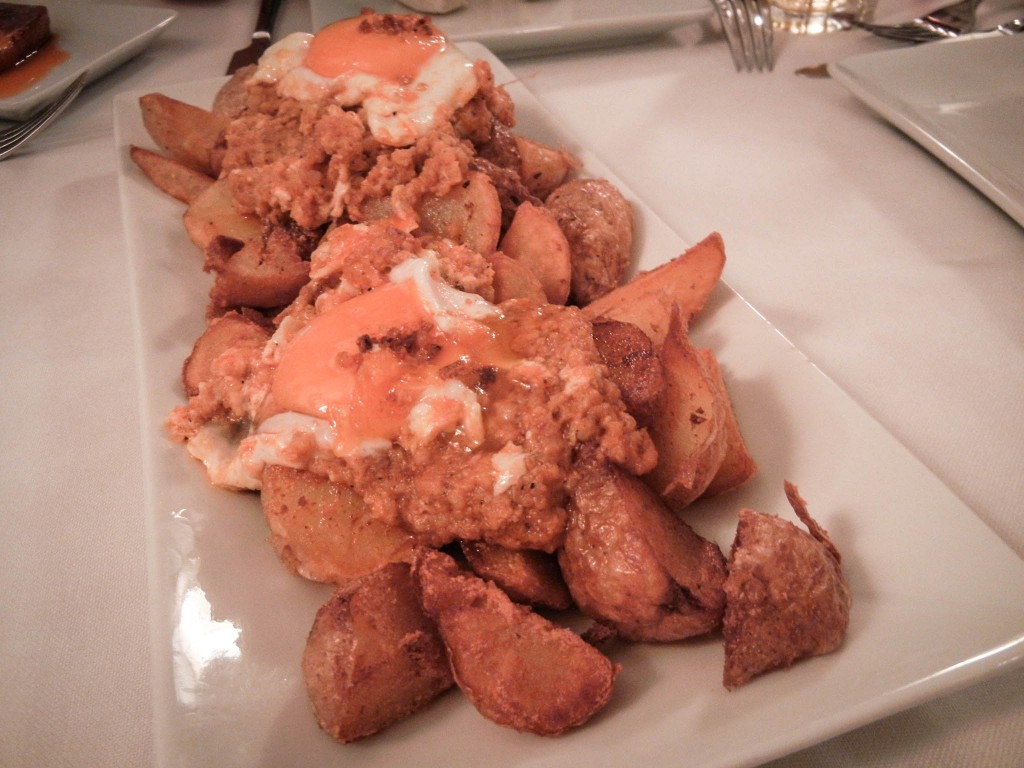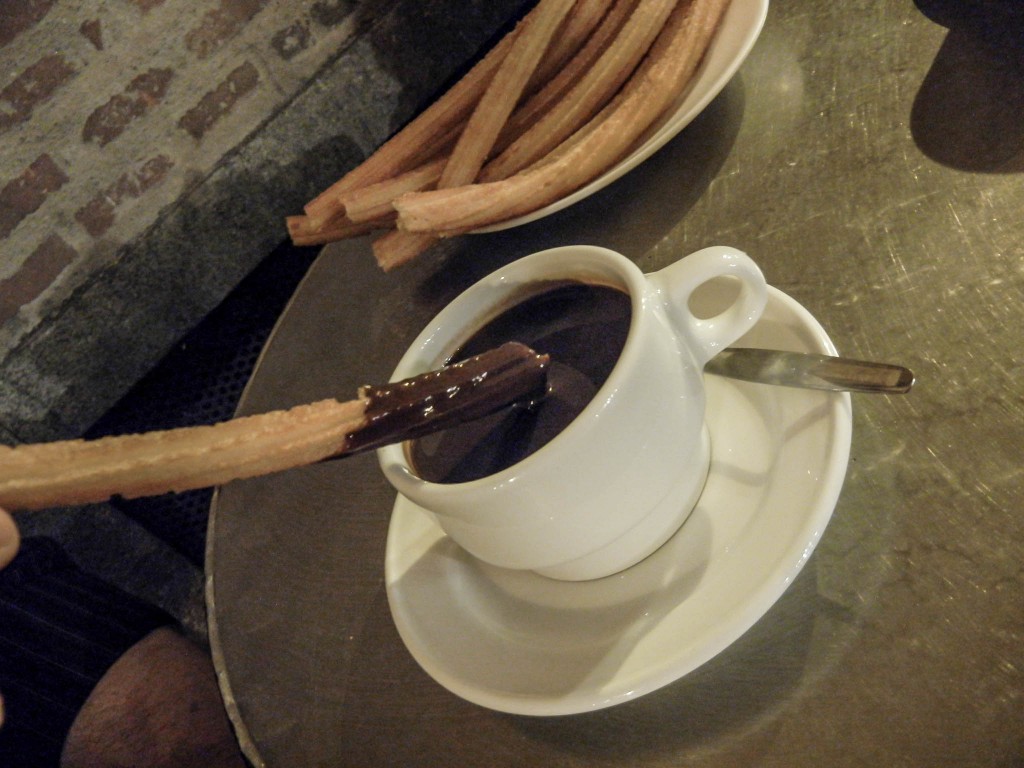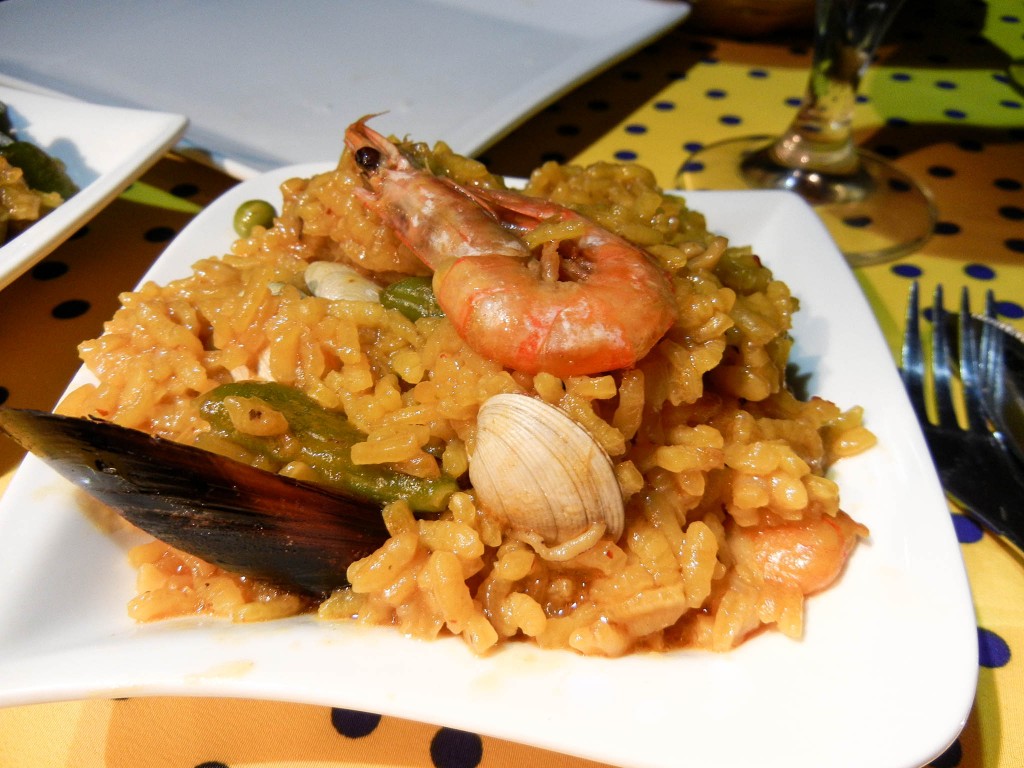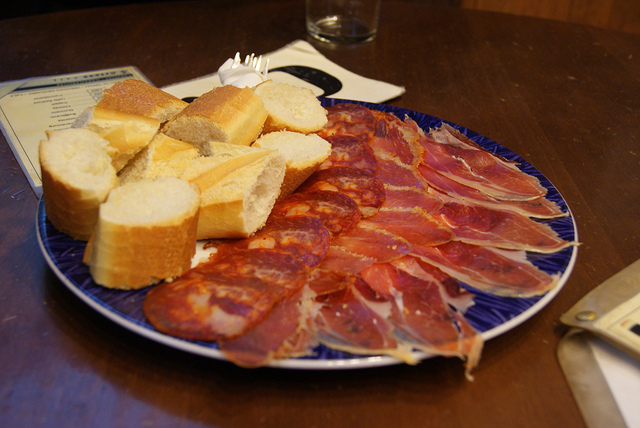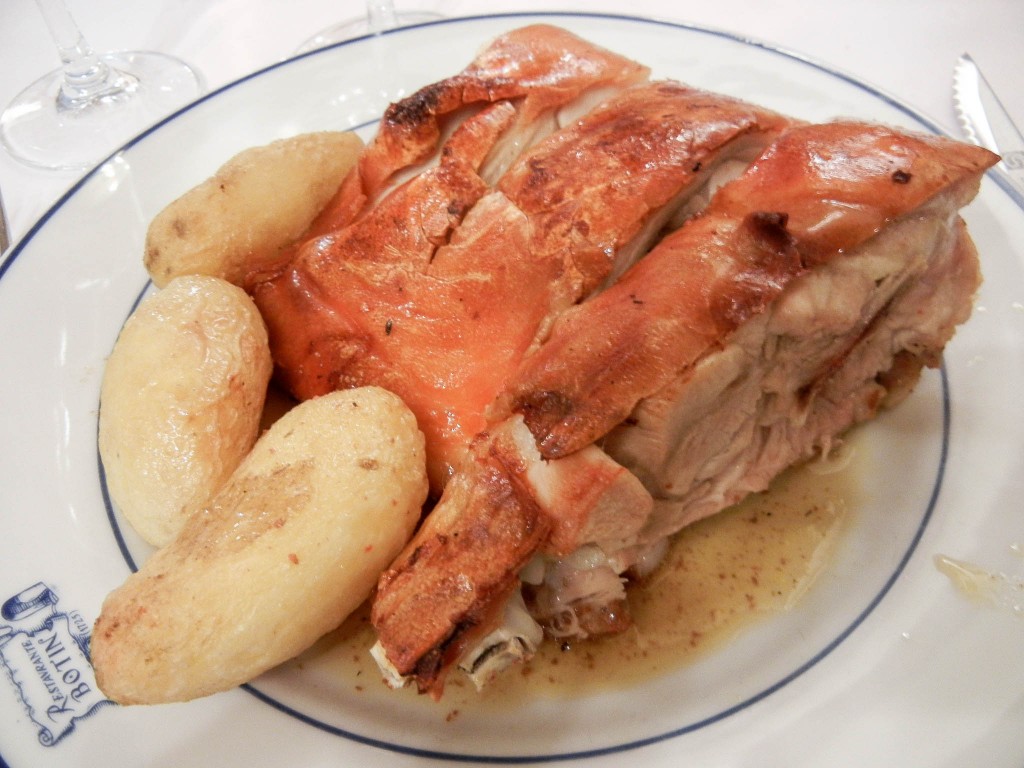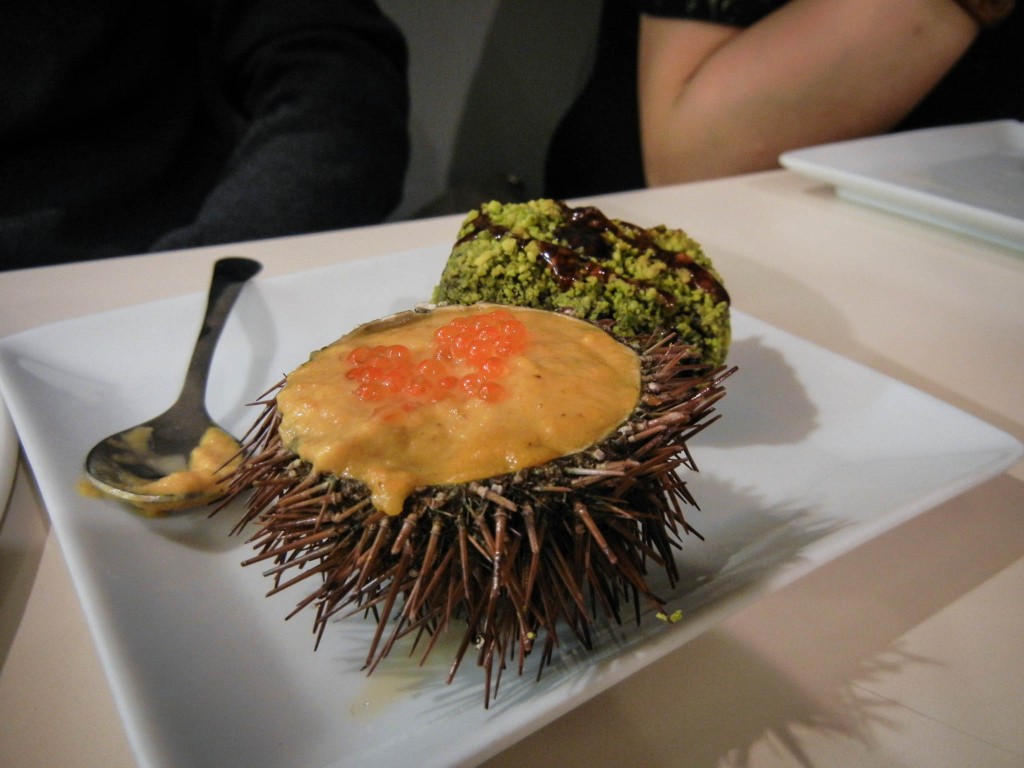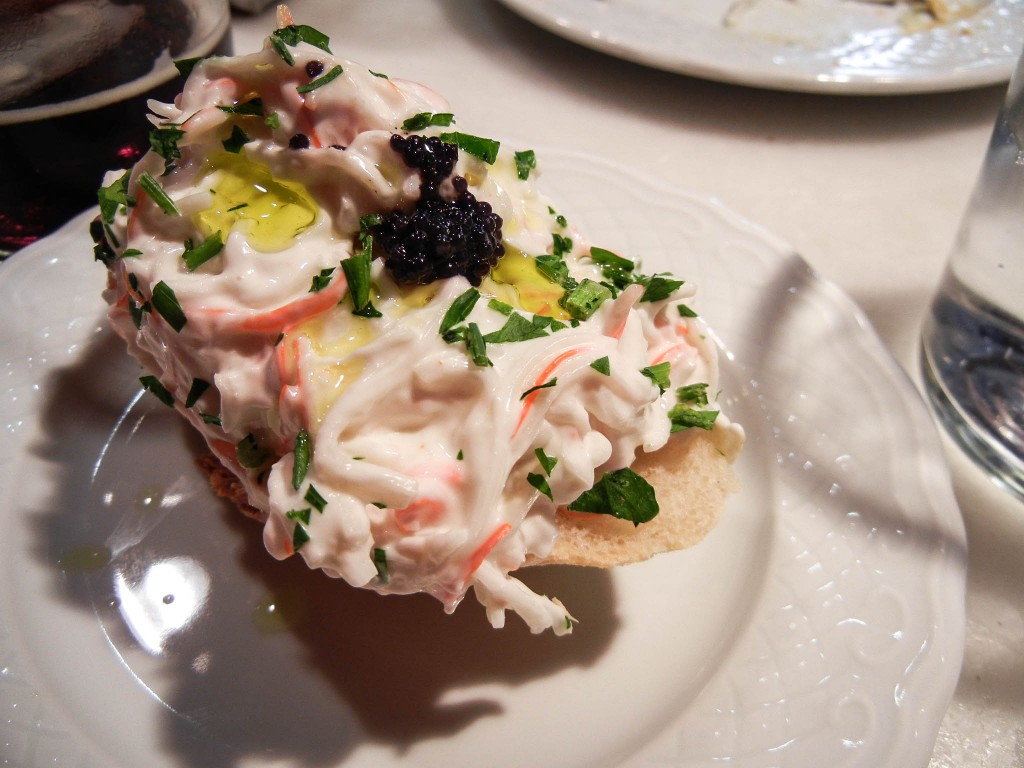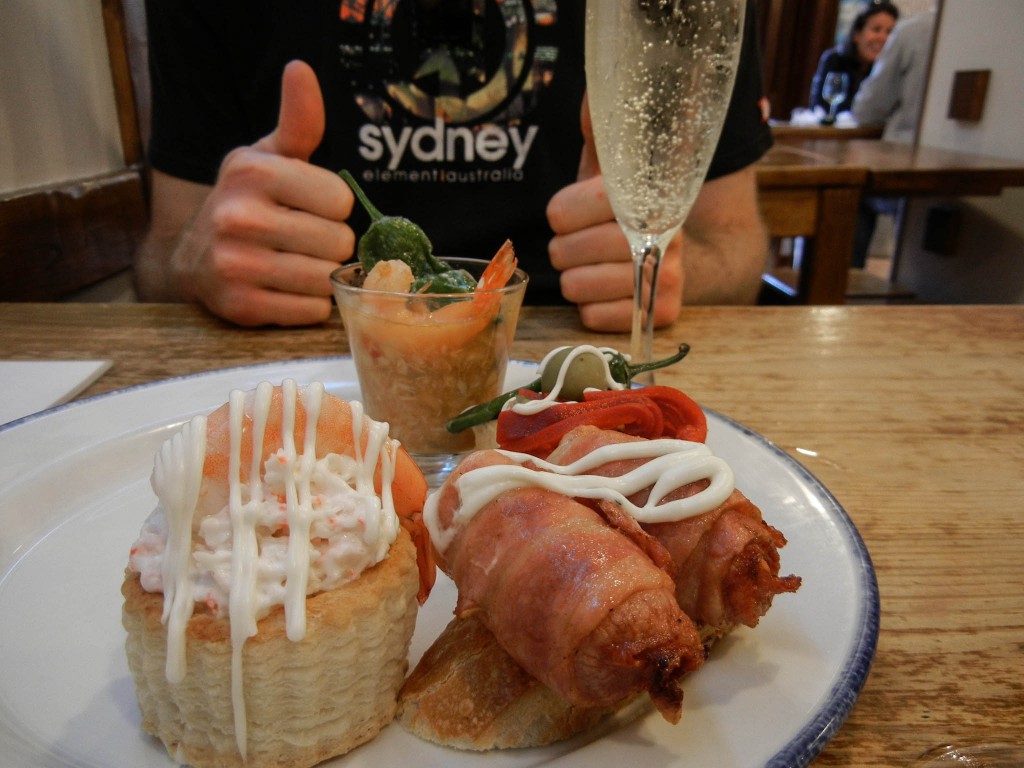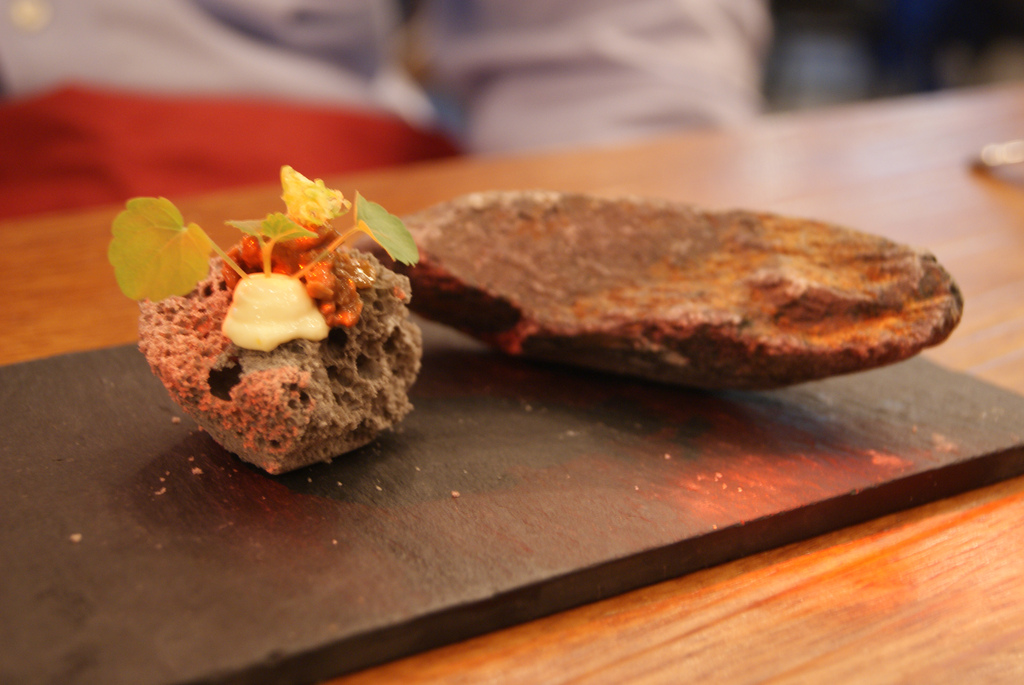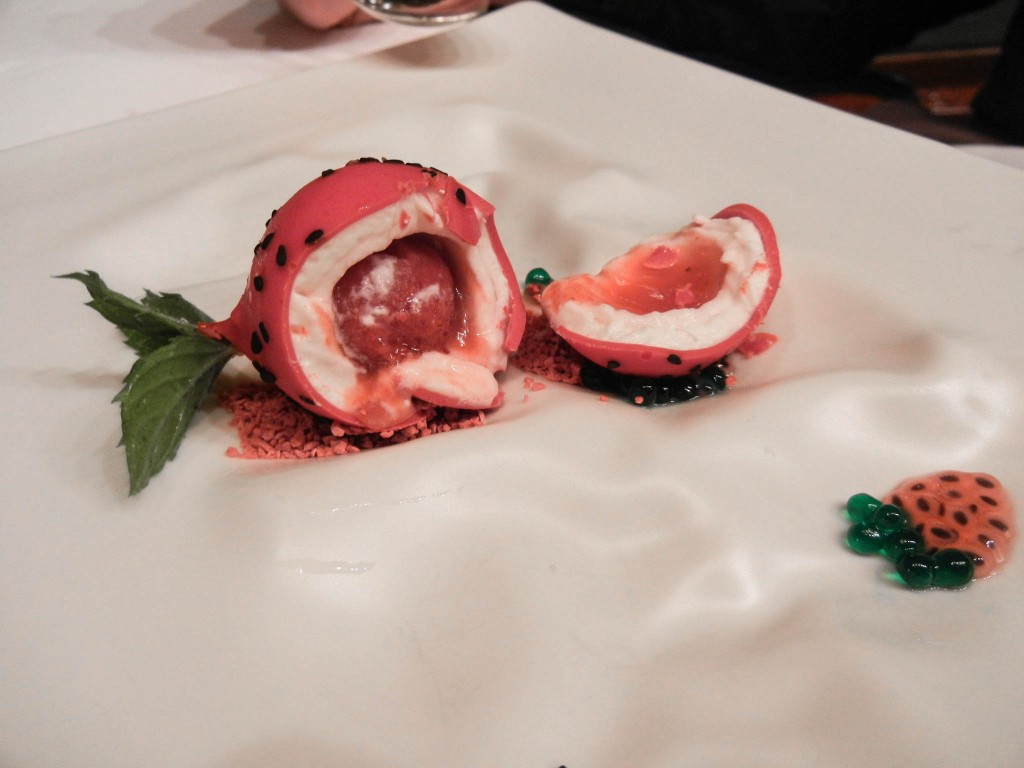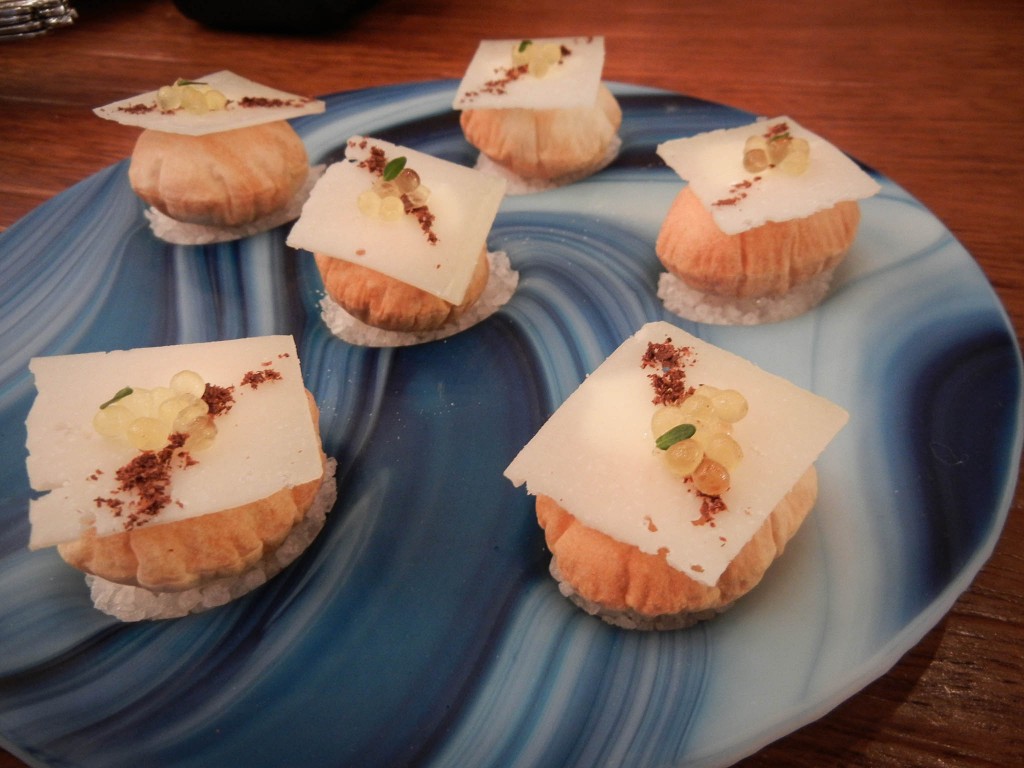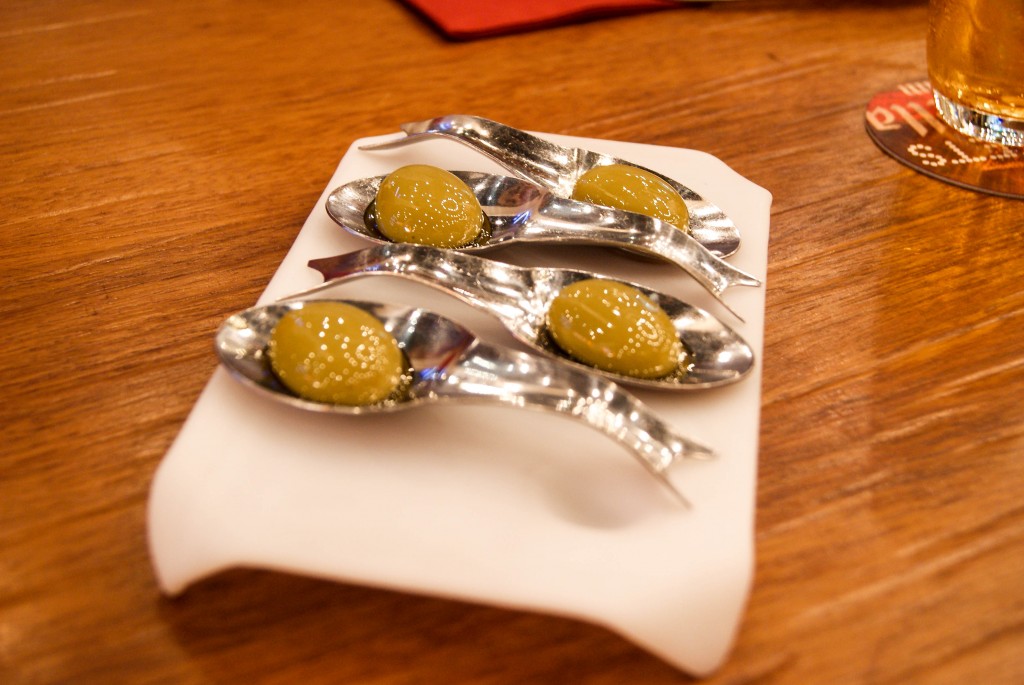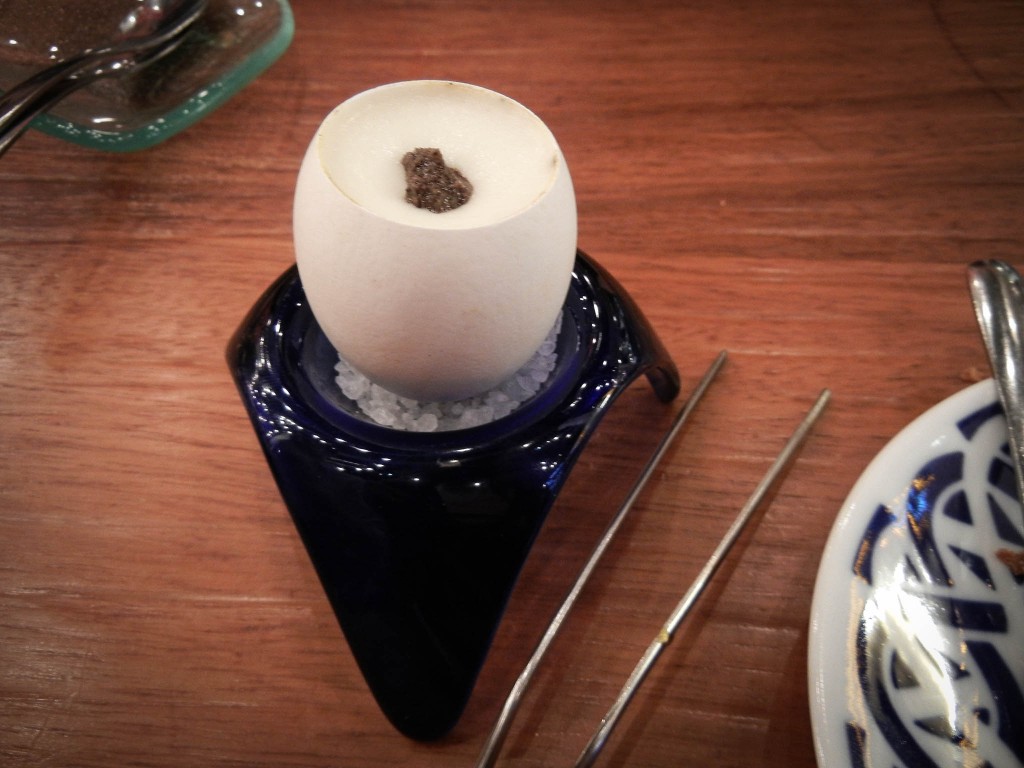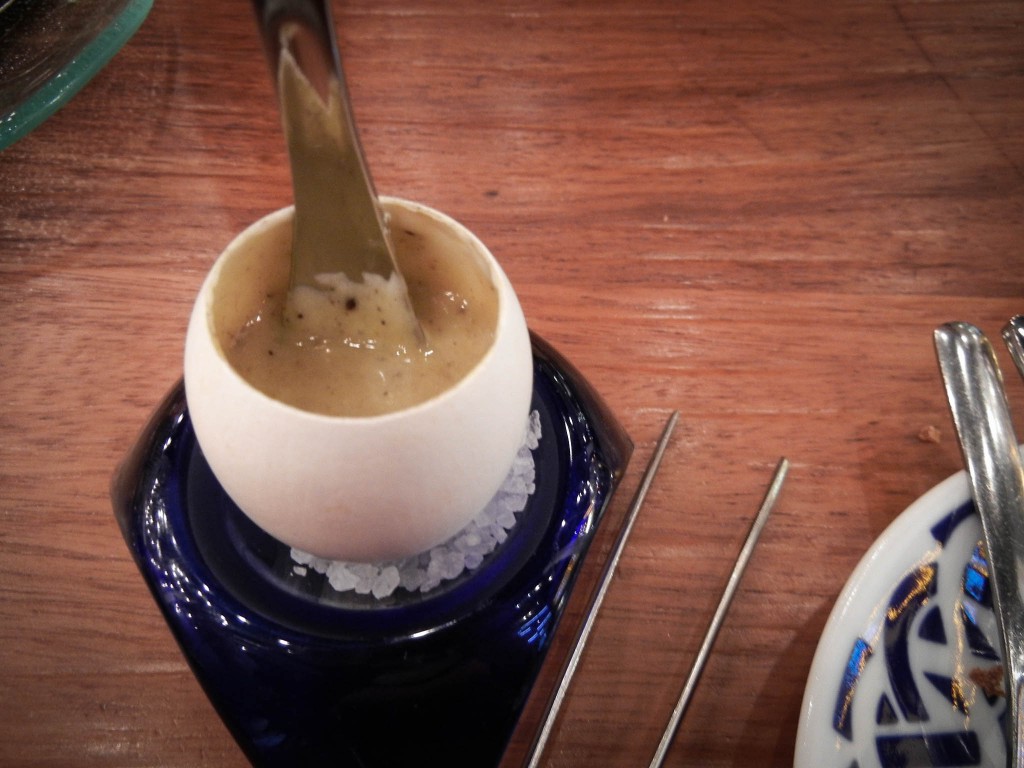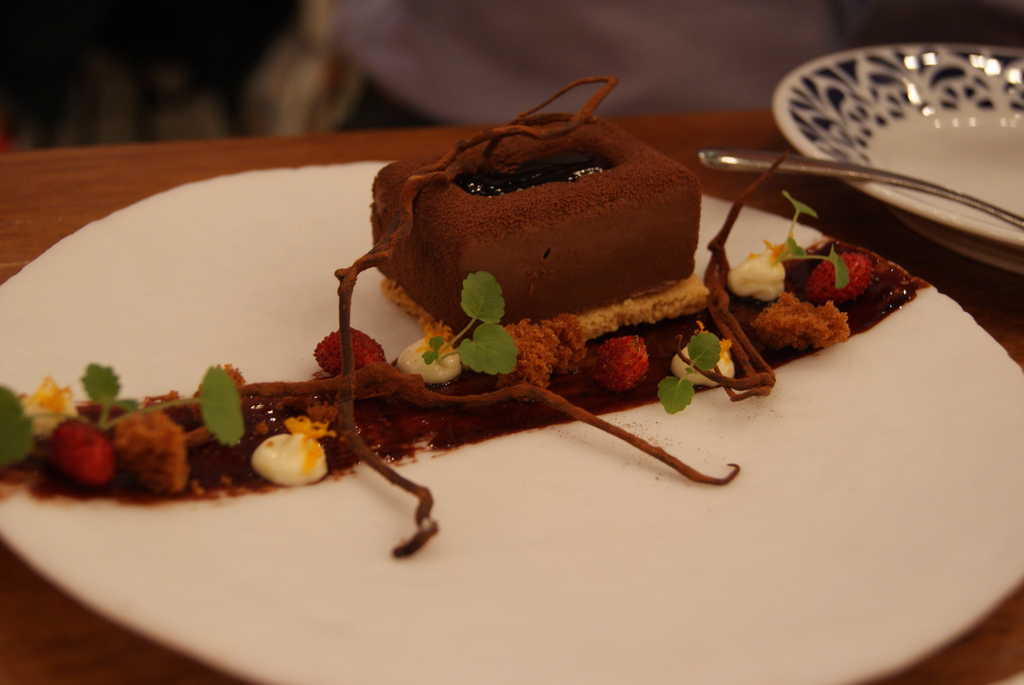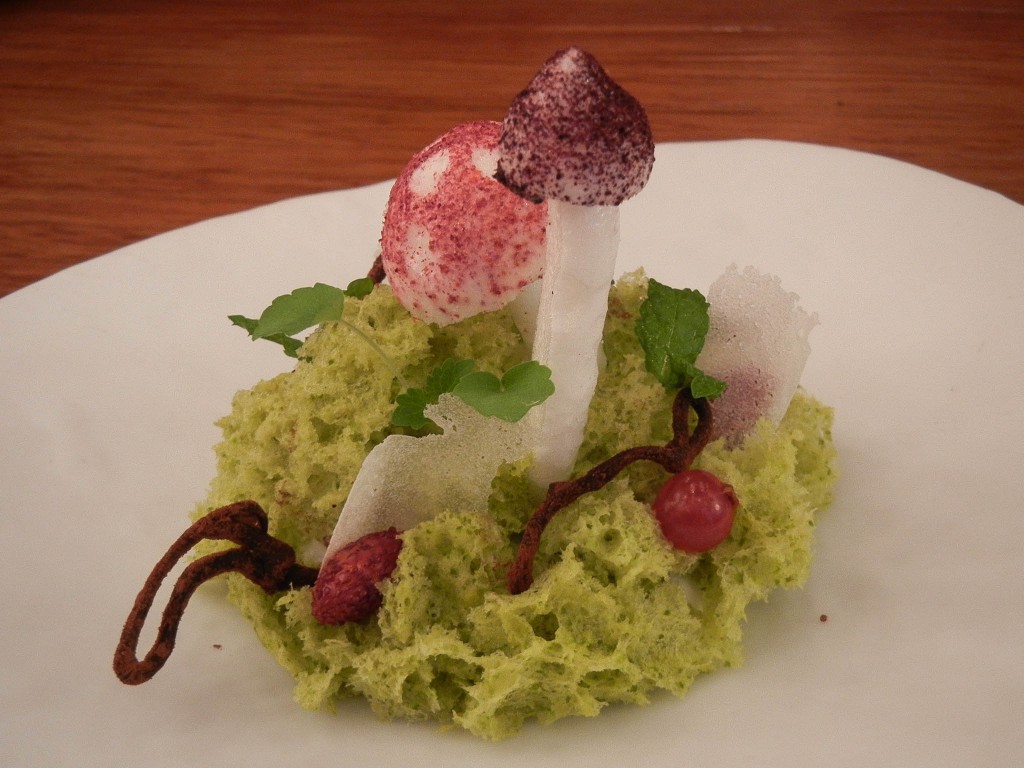Formerly a sleepy district in the center of Madrid, Malasaña has become a refuge for the city’s outcasts in recent years. Mostly dissidents of mainstream city life, these newcomers have revived and transformed the area into one of Madrid’s most thriving neighborhoods. With forward-thinking businesses sprouting on nearly every street corner, dusty and decayed structures have made room for artisan butcheries and trendy shops. Nowadays, you’ll find local culture peacefully coexist with erotic boutiques, grow shops, and heavy metal clubs. Despite these radical changes in locals’ everyday lives, the area has remained its authentic Madrilenian panache.
Upon exiting Tribunal metro station, the earthy colors of Malasaña’s buildings take you back to Moorish times. Make your way through clothespined alleyways towards Plaza del 2 de Mayo, Malasaña’s central hub for summer festivals and weekend flea markets. Make a pit stop at Buenas y Dulces for one of their ever-so-fruity tarts before nestling yourself on one of the park’s benches; the ideal spot for serious people watching. Zigzag your way down to charming Calle del Espíritu Santo from which streets meander into the dense neighborhood. Camouflaged amongst typical Spanish facades, Lolina Vintage Café is a hidden gem. Take a breather in their eighties inspired interior and enjoy a glass of icy Tinto de Verano.
Make up for skipping your siesta by adopting the Spanish tradition of late-afternoon tapas. With a hundred different mini-sandwiches on the menu and special prices on Wednesday and Sunday, Cervecería 100 Montaditos is a welcome alternative from ordinary sandwich shacks. Here’s how it works: skim the menu, order by number, and wait for your name to be called. For what are believed to be the best tapas in the area, head to Albur. With its fair prices, this restaurant provides a popular hang-out for both classy and casual crowds.
If you still find yourself with an itch in your pocket, browse through one of many specialty shops. Located just off Plaza del 2 de Mayo, Numbers Sneakers is the place to stock up a Malasaña essential: a pair of colorful hipster-approved kicks. While you’re at it, check out the custom cap-wearing mural on the wall behind the cash register. Magpie Vintage is the go-to place for both men and women looking to find unique pieces and explore new styles. End your shopping spree in Mercado de Fuencarral; a mall that houses a selection of the wackiest shops. Collections range from Jamaican memorabilia to tuxedo-styled bibs. Malasaña is also home to some of the oldest businesses in town: still-operating farmacia Juanse, founded in 1898, is the oldest of its kind in Madrid.
Sauntering the neighborhood with heavy shopping bags will work up an appetite, but remember that dinner is seldom served before 9 pm. When craving quality burgers, it’s hard to beat industrially-designed Naif Madrid Burguer & Bar, serving fully-loaded homemade burgers on toasty buns. For less than 8 euros, take-out eatery Ay Mi Madre! offers daily menus of Spanish classics; the menu may be small, but the food is quite satisfying. Alternatively sit down at atmospheric A 2 Velas and let a candlelit Iberian dinner herald true Malasaña dining and ambiance.
The people are loud and the waiters are rude; yet, Sidrería El Tigre provides a true Spanish experience. Elbow your way to the bar, order a round of beers and you’ll be rewarded with piles of complimentary tapas. Head over to Diplodocus for some serious pre-partying; bring some friends to share one of the massive 2-liter cocktails. Madrid nightlife is only getting started around midnight. Follow the twenty-something crowd to underground parties or queue up in front of scruffy-looking nightclubs. As soon as your eyes adjust to the brightly lit decorations, you’ll understand why Tupperware is among the coolest alternative rock bars in the city. Derived from what is not considered to be the most elegant of words, Maderfaker caters to a funkier crowd.
For the time being, Malasaña remains a retreat where weirdos feel perfectly normal again and people living the most banal of lives feel wonderfully weird again viagra moins cher. Set in a rustic Spanish setting, Malasaña and its residents will welcome you with open arms whether you’re a rebellious teenager, mutinous office worker, or suffering from a midlife-crisis.

